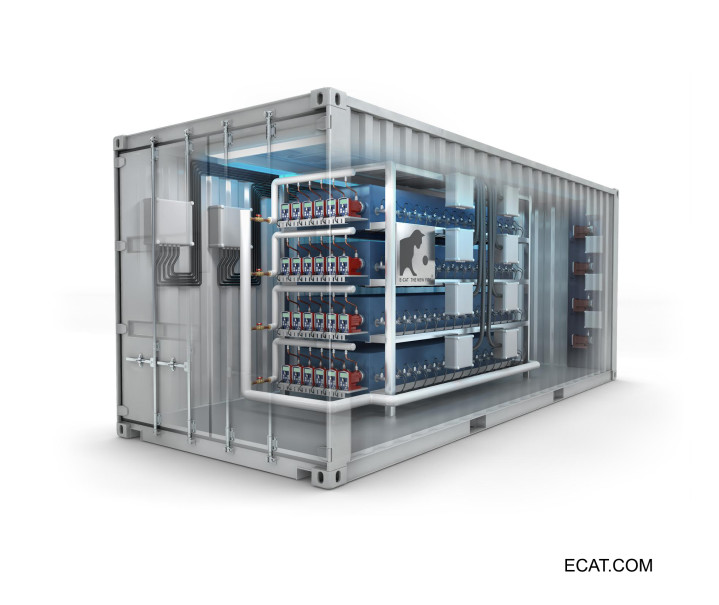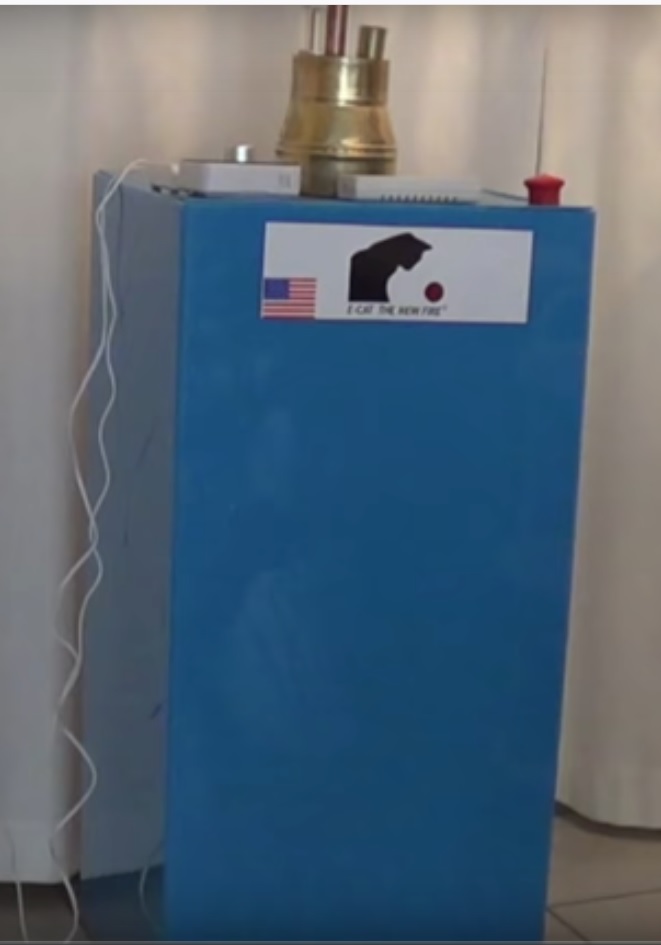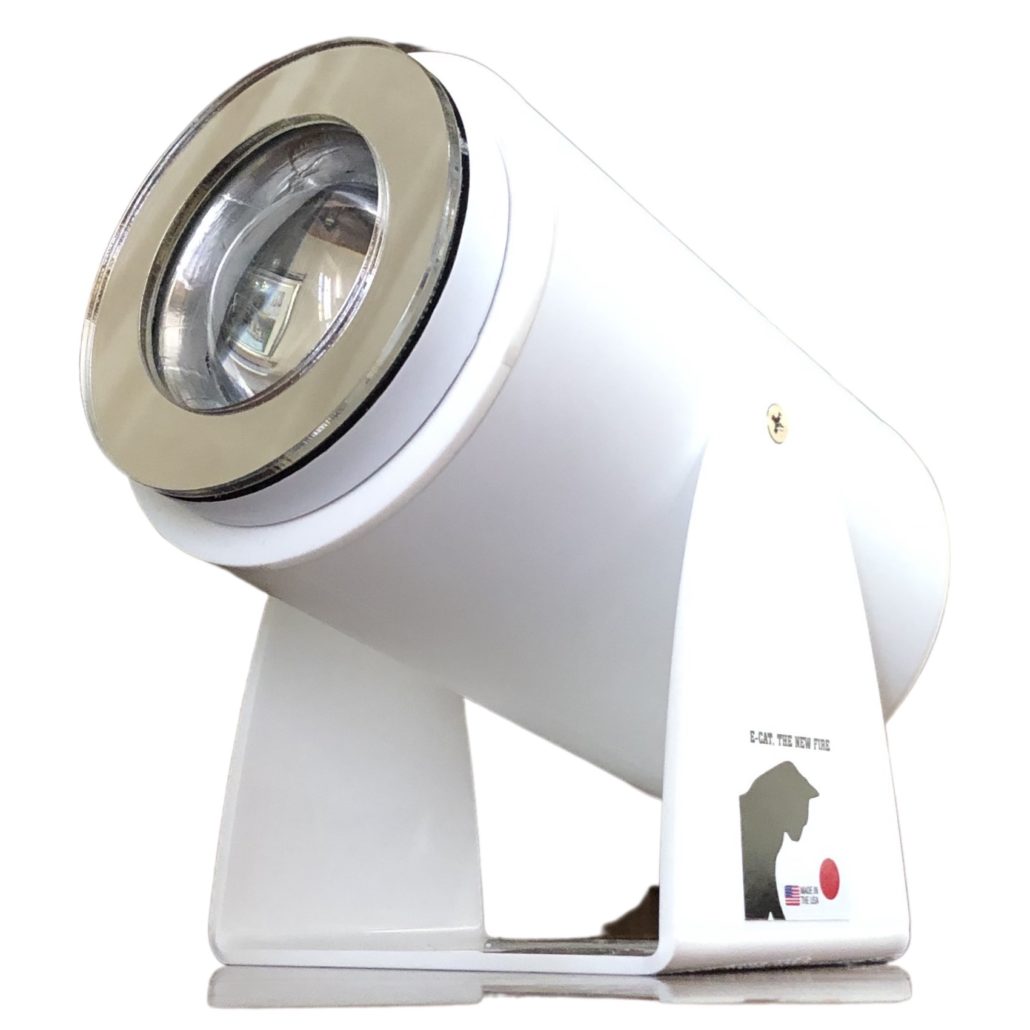Entirely novel and environmentally energy technologies
Self-running electricity generators based on the so-called ECAT technology
Last update 16 May 2025
Summary (extended version): Websites: Official ECAT website https://ecatthenewfire.com and https://e-catworld.com . This technology is based on research and development of the Italian engineer Dr. Andrea Rossi. Originally and over many years the so-called ECAT technology generated large amounts of thermal energy from very small amounts of hydrogen and nickel via assumed Low Energy Nuclear Reactions (LENR). The electrical power which was required to control an ECAT system was much less than the generated output power. Meanwhile, however, self-running electricity generators were developed and they base on a different design and operating principle. Some of the essential components of the new ECAT electricity generators are a (small) vacuum tube which is filled with a low pressure inert gas, a magnet which influences the motion and spatial arrangement of electrons in the vacuum tube, and a special AI-guided electronic control. It allows the extraction of usable energy from an everywhere present form of energy which is called vacuum energy, space energy, zero-point energy, or ether energy. Self-running electricity generators with the following output power can be pre-ordered via https://ecatthenewfire.com , namely 10 W, 100 W, 1 kW, 2 kW, 3 kW, 5 kW, 10 kW, 1 MW, and custom size. The 5 kW
generator, for example, has the dimensions 15 x 25 x 50 cm and a weight of 6 kg. Datasheet of the generators: https://ecatthenewfire.com/wp-content/uploads/2025/01/E-Cat-Power-NGU-DataSheet-2024-12-3.pdf . The
production and delivery of some of the pre-ordered generators starts
presumably in 2025, see also the two following videos from May 2025: https://www.youtube.com/watch?v=Cx3vw2hJLWs and https://www.youtube.com/watch?v=lvXhwMOdYIc . Scientific paper by Andrea Rossi: E-Cat SK and long-range particle interactions (January 2019 and last updated on 21 October 2022): https://dx.doi.org/10.13140/RG.2.2.28382.48966/11 . For a Japanese patent application JP2022188336A (abstract also in English) by Andrea Rossi, published on 21 December 2022, click here . The
following pdf provides parts of the Japanese patent
application JP2022188336A which are translated into German (pages 1 - 8 as of 15 Feb 2025) and other parts which are translated into English (pages 8 - 13 as of 15 Feb 2025) : http://www.borderlands.de/Links/DESCRIPTION%20JP2022188336A%20-%20in%20deutsch.pdf . Or download that pdf from this website (as of 15 February 2025): https://novam-research.com/resources/JP2022188336A_Translation_Parts-in German-on-pages-from-1-to-8_Parts-in English-on-pages-from-8-to-13_Published-via-borderlands-dot-de_As-of-15-Feb-2025.pdf .
Until about 2020 the development and testing of heat generators and heat-generating power plants was in the foreground. They were not commercially available because long-term tests revealed some issues. Some were installed and tested at third
parties and undisclosed customers.
Later another potential ECAT product was developed, namely a very efficient lamp which was called Ecat SKLed. It was a compact LED-based lamp with a luminosity of a 100 W LED lamp or a 700 W standard incandescent lamp. Yet it consumed only about 4 W electric power thanks to the Ecat technology inside.
Subsequently another potential ECAT product was developed, namely a small 100 W electricity generator which needed an input power of 1 W. Later that small input power power was no longer necessary and these types of generators were self-running. They were called Ecat SKLep NGU and it was possible to pre-order them as 10 W or 100 W version.
Meanwhile new generators, called ECat SKL NGU, with the following output power can be pre-ordered: 10 W, 100 W, 1 kW, 2 kW, 3 kW, 5 kW, 10 kW, 1 MW, and custom size. The 5 kW generator, for example, has the dimensions 15 x 25 x 50 cm and a weight of 6 kg. Datasheet of the generators: https://ecatthenewfire.com/wp-content/uploads/2025/01/E-Cat-Power-NGU-DataSheet-2024-12-3.pdf . The delivery of the first generators starts presumably at the end of 2025.
For further information see https://ecatthenewfire.com (official ECAT website) and https://e-catworld.com


Top: 1 MW ECAT thermal power plant. Bottom: A so-called ECAT SK unit which generated a thermal output power of 22 kW. These two images were copied in 2020 from https://ecat.com

Ecat SKLed lamp. Image copied on 31 October 2021 from https://ecat.com

ECat SKLep NGU 100 W - A compact 100 W electricity generator. Image copied on 10 September 2023 from https://ecatthenewfire.com

Ecat SKL NGU 10 W - A small 10 W electricity generator. Image from https://ecatthenewfire.com
Outline from the heat generation by nickel-hydrogen reactors to electricity generators which extract usable energy from the everywhere present zero point energy or vacuum energy via charge clusters and vacuum polarization of electrons which are created in a vacuum tube:
Report from the author of this website from 22 November 2015 about the ECAT heat generation technology (5 pages pdf): https://novam-research.com/resources/ECAT.pdf
The ECAT SK heating technology was presented in a worldwide broadcast
on 31 January 2019. The ECAT SK device comprised a heat exchanger for
fluids and generated 22 kW heating power by using only small amounts of
hydrogen (provided by a solid hydride material) and special nickel powder. Its
electric input power was only 380 W. The dimensions of the ECAT SK were
about 40 x 45 x 95 cm. The size of the internal reactor core - in which
the assumed Low Energy Nuclear Reactions (LENR) between hydrogen and nickel took place - was quite small, namely 11 mm long and 3 mm in diameter. The filling of
an ECAT SK unit with small amounts of nickel powder and a solid hydride
material allowed an operating time of at least one year.
The ECAT heat generation technology was / is considered as a LENR-based technology. LENR means Low Energy Nuclear Reactions. Broadly speaking it was assumed that hydrogen H (1) and nickel Ni (28) merge via LENR to copper Cu (29) which releases a large amount of energy. For further links and information about LENR see https://novam-research.com/lenr.php
The study of LENR-based reactions by conventional measurement techniques did not show the presence of harmful radioactive byproducts / harmful nuclear radiation. However, there are indications for a new and harmful type of radiation - called strange radiation - which is emitted from LENR reactors: https://e-catworld.com/2018/10/05/strange-radiation-tracks-from-lenr-reactors-documented-by-alexander-parkhomov . The available results of studies indicate that this new type of radiation is most intense within a distance < 20 cm from the LENR reactor and significantly weaker for distances > 20 cm. Furthermore, it seems that this new type of radiation can be screened. Thanks to Dr. Felix Scholkmann for communicating this information.
Meanwhile Andrea Rossi considers the underlying physics of the ECAT heat generation technology no longer in terms of LENR but in terms of dense electron clusters, electron-proton aggregates at picometer scale, their formation via vacuum polarization, and zero point energy. That is presented in the following paper:
- E-Cat SK and long-range particle interactions, Andrea Rossi (January 2019 and updated on 21 October 2022): https://dx.doi.org/10.13140/RG.2.2.28382.48966/11
The author of this website considers the zero point energy as a special case of the so-called space energy, ether energy, or vacuum energy which is presented in https://novam-research.com/resources/information-document.pdf
In the context of Andrea Ross's paper "E-Cat SK and long-range particle interations" also the following paper from April 2024 appears worthwhile to be mentioned:
- Charge Clusters, Low Energy Nuclear Reactions and Electron Structure, Giorgio Vassallo (April 2024): http://dx.doi.org/10.13140/RG.2.2.16518.38725/4
The paper "E-Cat SK and long-range particle interactions" by Andrea Rossi and its keywords charge clusters, vacuum polarization, and zero point energy / vacuum energy suggest also the transition from the E-Cat SK heat generation technology which is based on nickel-hydrogen reactors to the E-Cat SKL NGU electricity generators which are based on the extraction of the everywhere present zero point energy / vacuum energy via charge clusters and vacuum polarization of electrons which are created in a vacuum tube. Please note that the term "vacuum" in the twp phrases "vacuum polarization" and "vacuum tube" has a different meaning:
- "Vacuum tube" means a gastight housing which contains especially a wire which acts as an electrode and a another electrode which acts as a counterelectrode. If a sufficiently large current flows through the wire electrode, then the wire becomes hot. If additionally a voltage is applied between the hot wire electrode and the counterelectrode, then the hot wire electrode emits electrons. Usually the atmosphere within the housing is vacuum or a low pressure inert gas.
- "Vacuum polarization" means that a charged particle such as an electron polarizes its surrounding space. That surrounding space is always vacuum / quantum vacuum because even the building blocks of gaseous, liquid, or solid matter - namely the atoms - consist more than 99.9 % of so-called empty space / vacuum. A charged particle such as an electron polarizes its surrounding vacuum / quantum vacuum because there are fluctuations in the quantum vacuum which imply the permanent creation and annihilation of so-called virtual particle pairs with an opposite charge. The vacuum polarization may reduce the Coulomb repulsion between electrons and under specific conditions it may allow the formation of electron clusters which usually do not form because of the Coulomb repulsion between them.
A description of the new ECAT technology is presented in the Japanese patent application JP2022188336A by Andrea Rossi (title and abstract also in English) which was published on 21 December 2022. Title and abstract of this patent application:
- ELECTRICAL ENERGY GENERATING DEVICE AND ELECTRICAL ENERGY GENERATING METHOD
- To provide a highly efficient electrical energy generating device.SOLUTION: In an electrical energy generating device, in a conductive hollow housing 2 consisting of an electron gun 30 made of a tungsten-hafnium alloy made of metal or quartz containing a conductor and connected to and driven by a power supply 5, and a grid 25 provided on the electron gun, as the electrons hit the target, a magnet 4 makes the electrons run straight toward the target and ground until the hollow of the conductive hollow housing 2 is saturated, after which the MOSFET prevents the electrons from going to ground, the diode directs the electrons from the capacitor to the load.SELECTED DRAWING: Figure 1
The following pdf provides of the Japanese patent application JP2022188336A parts which are translated into German (pages 1 - 8 as of 15 Feb 2025) and other parts which are translated into English (pages 8 - 13 as of 15 Feb 2025) : http://www.borderlands.de/Links/DESCRIPTION%20JP2022188336A%20-%20in%20deutsch.pdf . Or download that pdf from this website (as of 15 February 2025): https://novam-research.com/resources/JP2022188336A_Translation_Parts-in German-on-pages-from-1-to-8_Parts-in English-on-pages-from-8-to-13_Published-via-borderlands-dot-de_As-of-15-Feb-2025.pdf
Further references and information:
- Presentation by Adolf Schneider at the German-language meeting of the Swiss Association for Space Energy on 17 January 2025 in Zurich in Switzerland
Examples of German-language reports about the Ecat technology in the German-language NET Journal (ISSN 1420-9292):
- pages 18 - 21 in the January / February 2025 issue (in German)
- pages 36 and 37 in the September / October 2023 issue (in German)
- pages 20 - 22 in the March / April 2023 issue (in German)
- pages 4 - 7 in the January / February 2022 issue (in German)